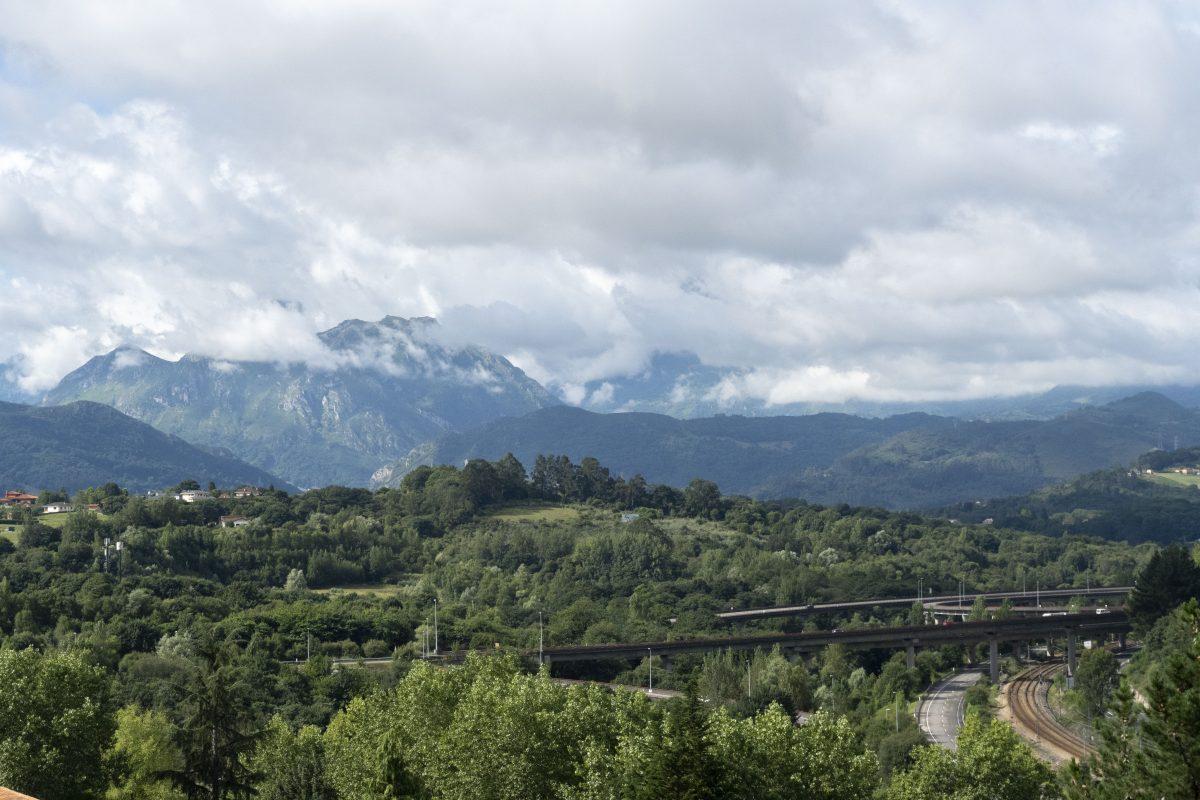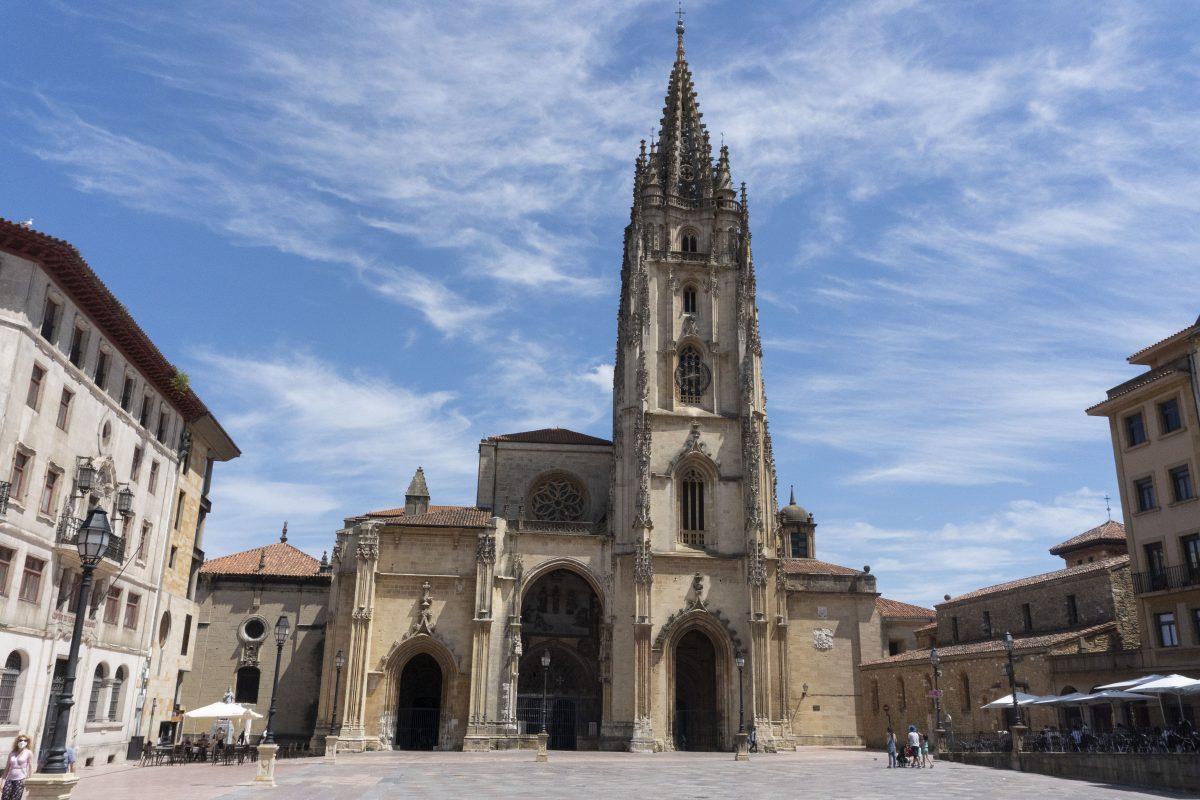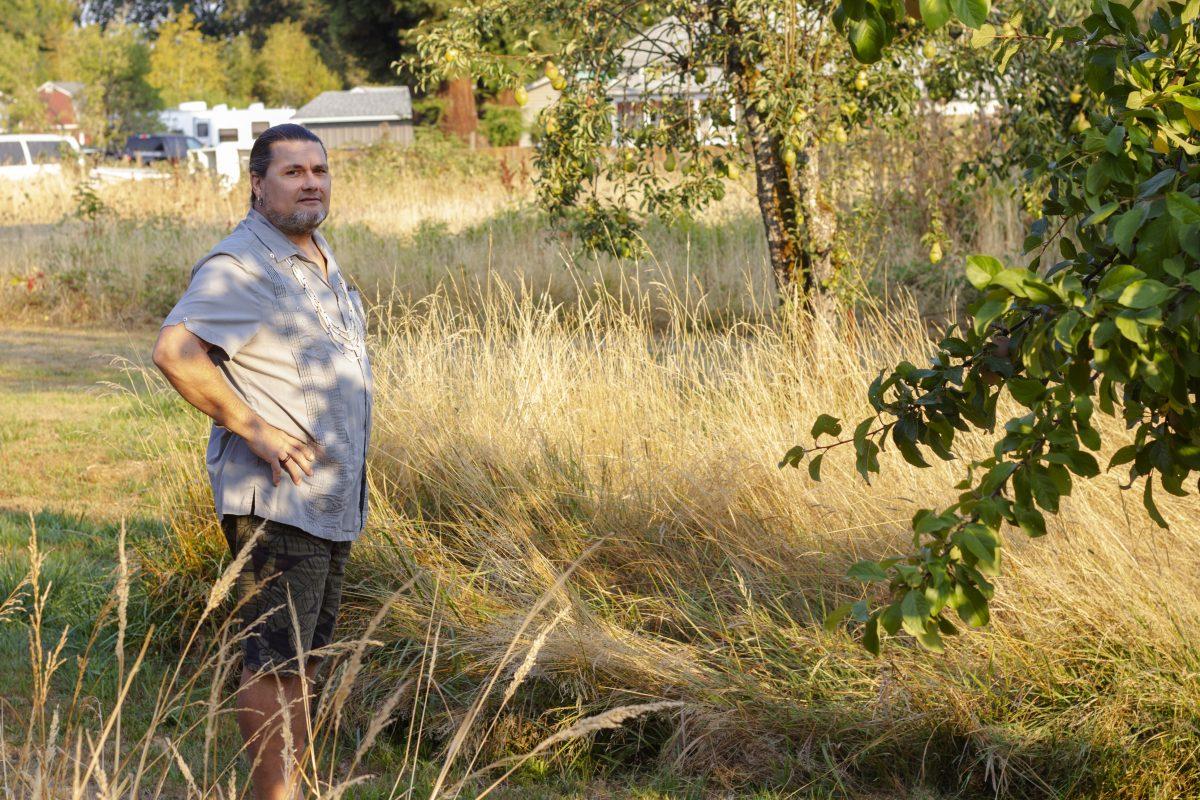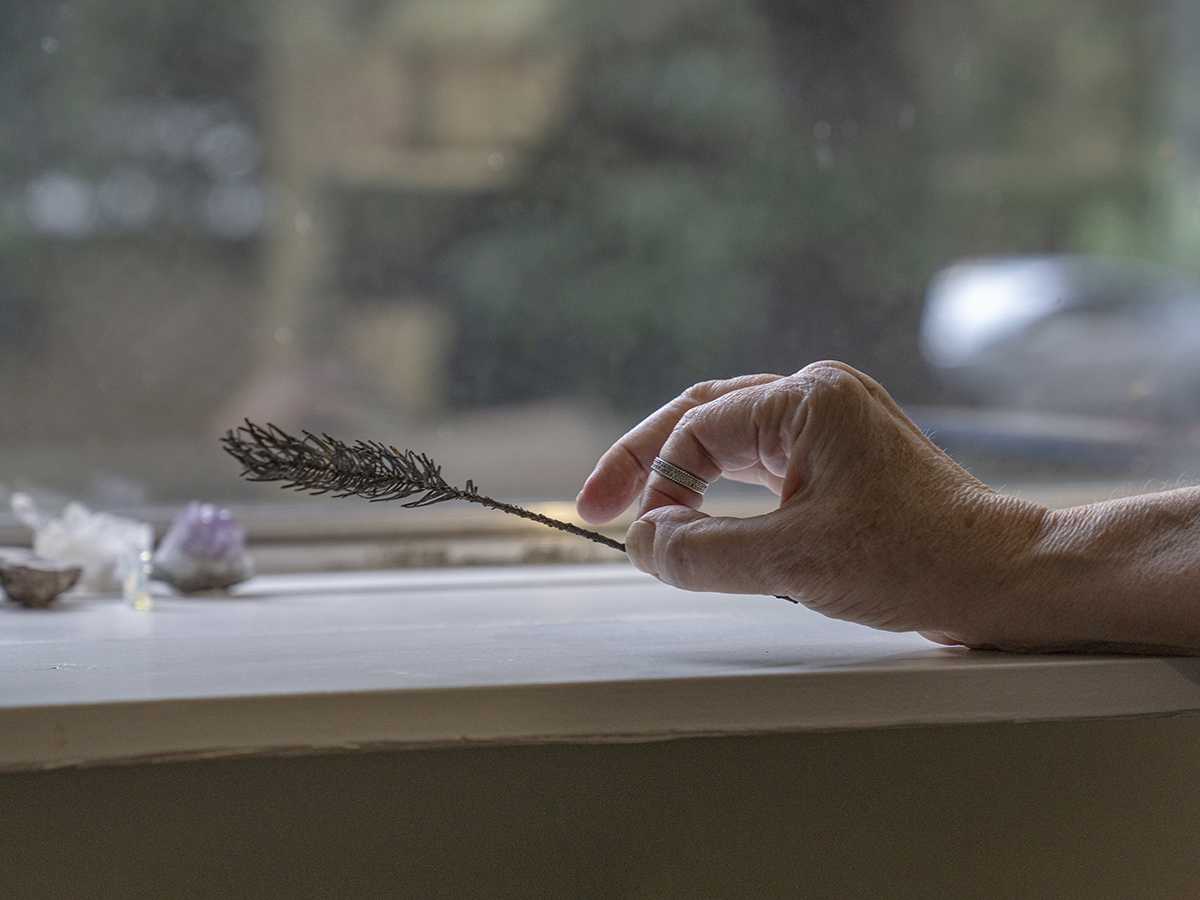Night comes slowly in Asturias. In Oviedo, the region’s capital, situated near the coast of the Bay of Biscay in northwestern Spain, the summer sun doesn’t set until close to 10 p.m. Around 7 p.m., low gray clouds roll in, blanketing the surrounding green mountains and accentuating the illuminated spire of the 1200-year-old Cathedral of San Salvador at the hilly city’s center.
As the hours pass and the sky darkens, the narrow streets fill with hungry Ovetenses meandering their way to their favorite restaurants and sidrerias — drinking establishments that serve Asturian sidra, an alcoholic cider made from the region’s 500 varieties of sour apples. They stay until well past midnight, chatting, drinking and smoking with friends after a long day of work.
As in each of Spain’s 17 autonomous communities, a shared cultural experience is an integral part of the regional identity. And, like its cuisine, art or architecture, Asturian culture is intimately entwined with the local Asturian language.
Subtle reminders of the language’s influence are scattered throughout Oviedo. Many of the restaurants and sidrerias that line the city’s pedestrian-only avenues have restrooms marked “homes” and “muyeres,” Asturian for “men” and “women.” During lunch hour, which lasts from 1 to 3 p.m., one might catch a group of paisanos(native Asturians) inside a packed cafe, shouting “me presta!” (“I like it!”) to their waiters as they hunch over their steaming bowls of fabada — a rich Asturian bean stew that’s slow-cooked with chunks of bacon and blood sausage.
At a checkered-floored rock ‘n’ roll bar along Oviedo’s youth corridor, customers are greeted upon entry by a life-size photograph of Joey Ramone with a white surgical mask taped over his mouth. Pasted next to Ramone is a cardboard speech bubble that says, “pon la mascarilla, no me seas fatu,” a Spanish-Asturian hybrid sentence meaning, “don’t be dumb to me, put on your mask.”
But the ancient language of Asturiano — or Asturianu as it is spelled in Asturian — has fought an uphill battle in recent years to maintain its relevance in a country where Castilian Spanish has become the dominant language of business, politics and education. The United Nations Educational, Scientific and Cultural Organization classifies Asturian as “definitely endangered” on its Atlas of the World’s Languages in Danger, meaning that most children born in Asturias no longer learn the language as their mother tongue. As the number of native speakers dwindles, Asturian writers and educators fight deeply-rooted social stigmas to save a language that they see as essential to preserving the cultural legacy.
Xulio Viejo Fernández, a writer who publishes novels and poetry in Asturian and a researcher in the University of Oviedo’s linguistics department, has experienced the clash between Spanish and Asturian firsthand. He says a power imbalance exists between the two languages because many of the community’s citizens, particularly those living in urban areas, view Asturian as an improper way of speaking — fit only for casual conversation among rural farmers.
“It’s this idea that Asturian is an inferior language,” he says. “That it’s the property of ignorant, uneducated people.”
Viejo grew up in Oviedo, where he was raised by Asturian parents who immersed him in Asturian language and culture at home while he learned Spanish in school. He says that growing up, he quickly realized the prejudice against Asturian speakers through interactions with his teachers and classmates.
He recalls being insulted by a teacher in front of his class for answering a question in Asturian and being bullied on the playground by other students for speaking his native tongue.
“If one’s in school and they let slip an Asturian expression,” he says, “they might be punished by their teacher or, more commonly, like in my case, ridiculed in front of the entire class.”
Viejo says he remembers teachers who’d mockingly address students in Asturian for speaking the language in class, usually in a sarcastic tone of voice meant to elicit laughter from the other students. He says he’s also heard testimonies from older Asturians, who were students decades prior to him, who claim they were physically abused by their teachers when they used Asturian vocabulary. Teachers would slap children’s ears, hit them on the hand with rulers and force them to stand for the duration of the class, he says.
During Viejo’s years in primary school in the 1970s and 1980s, he says it was common for teachers to condescendingly correct students who swapped Spanish words for Asturian — like the Asturian term “ye” in place of the Spanish term “es” (both words meaning “is”).
“The correction could be more or less friendly,” he says. “But other times, they’d make a fool of the child by presenting him to his classmates as ignorant or backward.”
This was more common in the past, he says, but the effects of this prejudice are still felt today.
Instances like these are one of the reasons why the Asturian language is at risk of disappearing entirely, according to Viejo. Many native Asturian speakers grow up speaking the language at home but quickly internalize a feeling of shame as a reaction to the way non-speakers sometimes perceive it, leading them to abandon their language entirely.
In larger cities, he says, nearly all business and education is conducted in Spanish, meaning that native Asturian speakers must be able to speak perfect Spanish if they want to find a job. Additionally, public schools in Asturias primarily offer classes in Spanish, aside from a few that offer elective courses in Asturian, so anything that deviates from proper Spanish spelling and pronunciation is considered wrong.
Ramón d’Andrés Díaz, a professor at the University of Oviedo’s Spanish philology department and a member of Oviedo’s Academy of the Asturian Language, says the majority of native Asturian speakers — which he defines as anyone who learned to speak the language as a child — are older people who live in rural areas and earn their livings through blue-collar jobs in industries like fishing or agriculture.
He says that as time goes on, the Asturian spoken among native speakers is increasingly influenced by Spanish through the borrowing of vocabulary and sentence structure, which he says is a threat to its preservation as a distinct language.
“It is a recessive language that exists unevenly with Spanish,” d’Andrés Díaz says. “Its use among young people is declining, and it is in danger of disappearing.”
According to d’Andrés Díaz, the decline of the Asturian language began with the Castilian conquest of Asturias in the 14th century. At the time, the Kingdom of Castile — which eventually gave way to the current autonomous community of Castile and Leon, located directly to the south of Asturias — was one of the most powerful monarchies in the Iberian Peninsula and was beginning to expand its reach into the neighboring regions. Castilian politicians and wealthy elites brought their language and customs with them as they settled in Asturias, a process which d’Andrés Díaz refers to as “castilianization.”
Castilian Spanish continued its spread throughout the ruling class during the following centuries but did not have the same effect on the general population, he says, leaving Asturian to be forever associated with the lower rungs of the social ladder.
“This process affected the social use of the language throughout the 20th century,” d’Andrés Díaz says. “It’s what makes Asturian a minority language today.”
After the death of Francisco Franco — who ruled Spain under a fascist regime from the end of the Spanish Civil War in 1939 until his death in 1975 — and Spain’s subsequent transition to democracy, some of the country’s autonomous communities officialized their local languages as a way to assert their cultural identity, Viejo says.
In an effort to homogenize Spanish society, Franco’s fascist government made Spanish the nation’s only official language and heavily repressed the use of local regional languages, like Asturian, Basque, Galician and Catalan, imposing censorship laws to discourage the publication of songs, art and literature in anything other than Spanish.
The Spanish constitution has since granted official status to any local language that receives official status from its respective autonomous community’s government, at which point it becomes a required subject in public school curriculum. According to d’Andrés Díaz, this is the case for Basque, Galician and Catalan, but not Asturian because the Parliament of Asturias has yet to designate Asturian as one of the community’s official languages.
“It’s still possible,” d’Andrés Díaz says, “But it must first be approved by the Asturian Parliament, and the Asturian Parliament has never wanted to approve it.”
Viejo sees the Asturian government’s failure to officialize its language as partially a result of a weaker societal connection in Asturias between the language and the community’s sense of cultural pride compared to other autonomous communities.
“In other territories, there was a much stronger sense of nationalism linked to the language as a way of establishing their autonomy,” he says. “But in Asturias, we were more repressed in that sense; there was never a nationalist consciousness that strong like in Catalonia or the Basque Country.”
He also says that in the wake of the country’s 2008 financial crisis, the government’s priority has been more focused on economic recovery rather than cultural and linguistic preservation, meaning that the officialization of the Asturian language relatively carries less weight.
Viejo says close to one-third of the Asturian population can speak the language, which is about 300,000 people. However, he says this number can be misleading because every Asturian speaker uses the language differently. Some speak only at home with their families, while others grew up speaking the language but stopped as they got older, meaning they can understand the language but struggle to speak fluently. Viejo says some abandon the language in their youth due to social pressures outside the home, then regain a sense of pride for their Asturian identity during adulthood and begin speaking it again to their Asturian friends and family members.
While northern Spain’s history has forced some native Asturians away from their mother tongue, the language survives partly through elective courses taught in Asturian public schools. Alba Carballo is a native Asturian speaker and former student of Viejo’s who currently teaches Asturian language and literature classes at a public high school in Gijón, an industrial coastal city about 15 miles north of Oviedo.
Students in Asturias are required to learn a second language in school, so, Carballo says, many of them choose to learn Asturian because it’s closer to them and their heritage than languages from other countries.
“Most of them say that they want to learn more about the culture and that they want to learn what their ancestors lived through,” she says. “They want to keep the flame of the Asturian language alive.”
Carballo says that out of 400 students at the school she teaches at, there are currently about 90 students taking her Asturian classes. While there is little variation between rural and urban areas in the number of students who take Asturian language classes, she says that younger, elementary school-aged students are learning Asturian than older students. Carballo says this could result from parents encouraging their children to switch to more “useful” languages, like French, German or English, as they get older.
To Viejo, the Asturian culture cannot exist as it is without the Asturian language. While art, literature, cuisine, architecture and other cultural artifacts will have a place in society regardless of how many people can still speak the language, it’s the language that gives a human voice to the shared cultural experience.
“It’s all one part of the same experience,” he says. “Language is culture, and culture is language. You cannot separate them.”
Like Viejo, Carballo says that Asturian culture cannot exist as it does today without a segment of the population actively speaking the language. The language, she says, provides a living reminder of the ways things once were: a testament to the history of modern-day Asturias.
“It’s keeping the culture alive,” Carballo says. “Losing the language would be to lose an intangible heritage.”
The Catedral Metropolitana Basílica de San Salvador de Oviedo is the heart of Oviedo. Founded over a thousand years ago, the Cathedral towers over the plaza and reminds passersby of the town’s rich history. Its bells sound several times a day, and events or gatherings take place below in the Plaza de la Catedral often.












![[Photo Courtesy of the Lara Family]
Ruben embraces his beloved childhood goat, Katrina.](https://ethos.dailyemerald.com/wp-content/uploads/2025/05/katrina-1-1060x1200.jpg)


